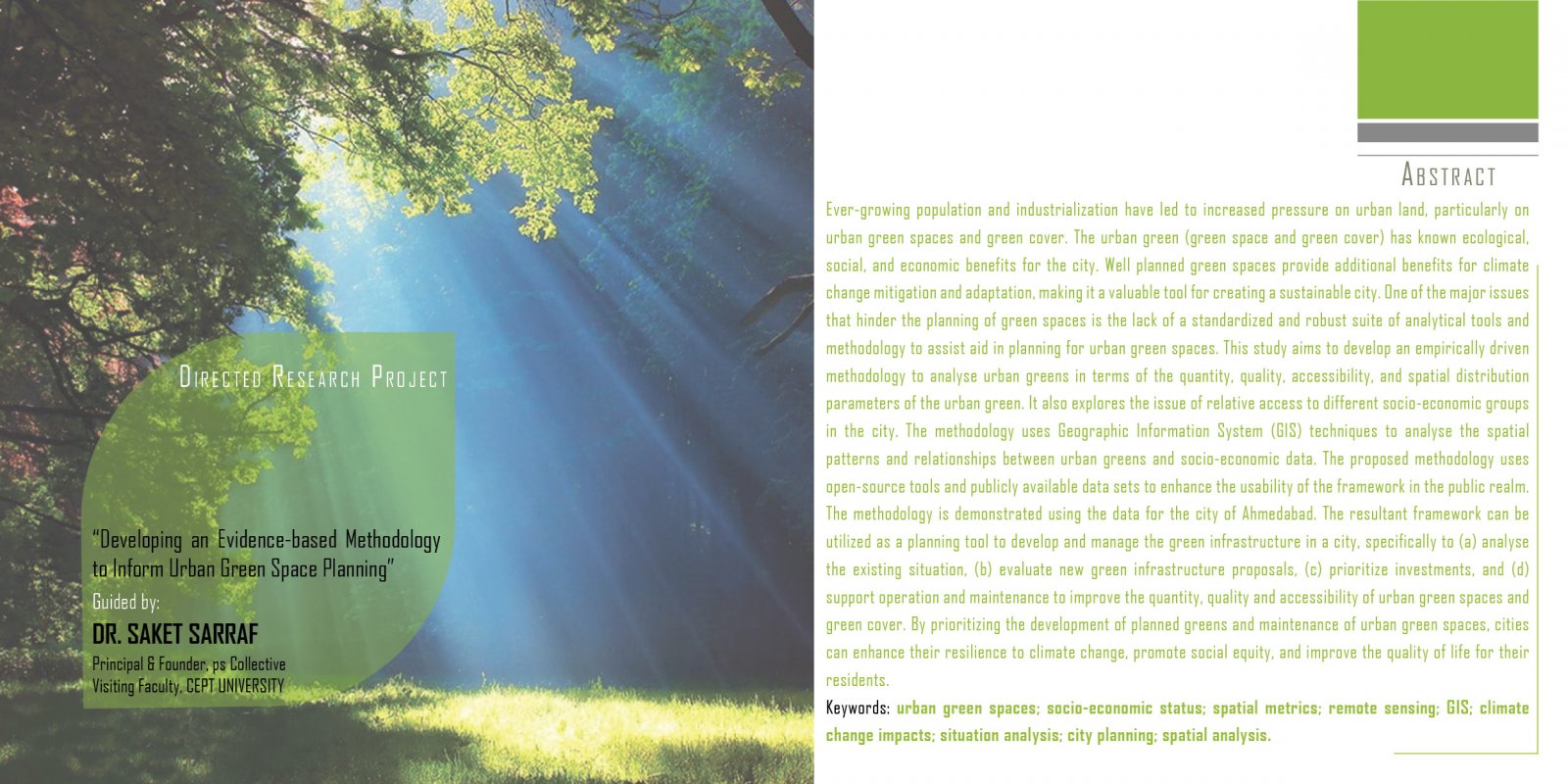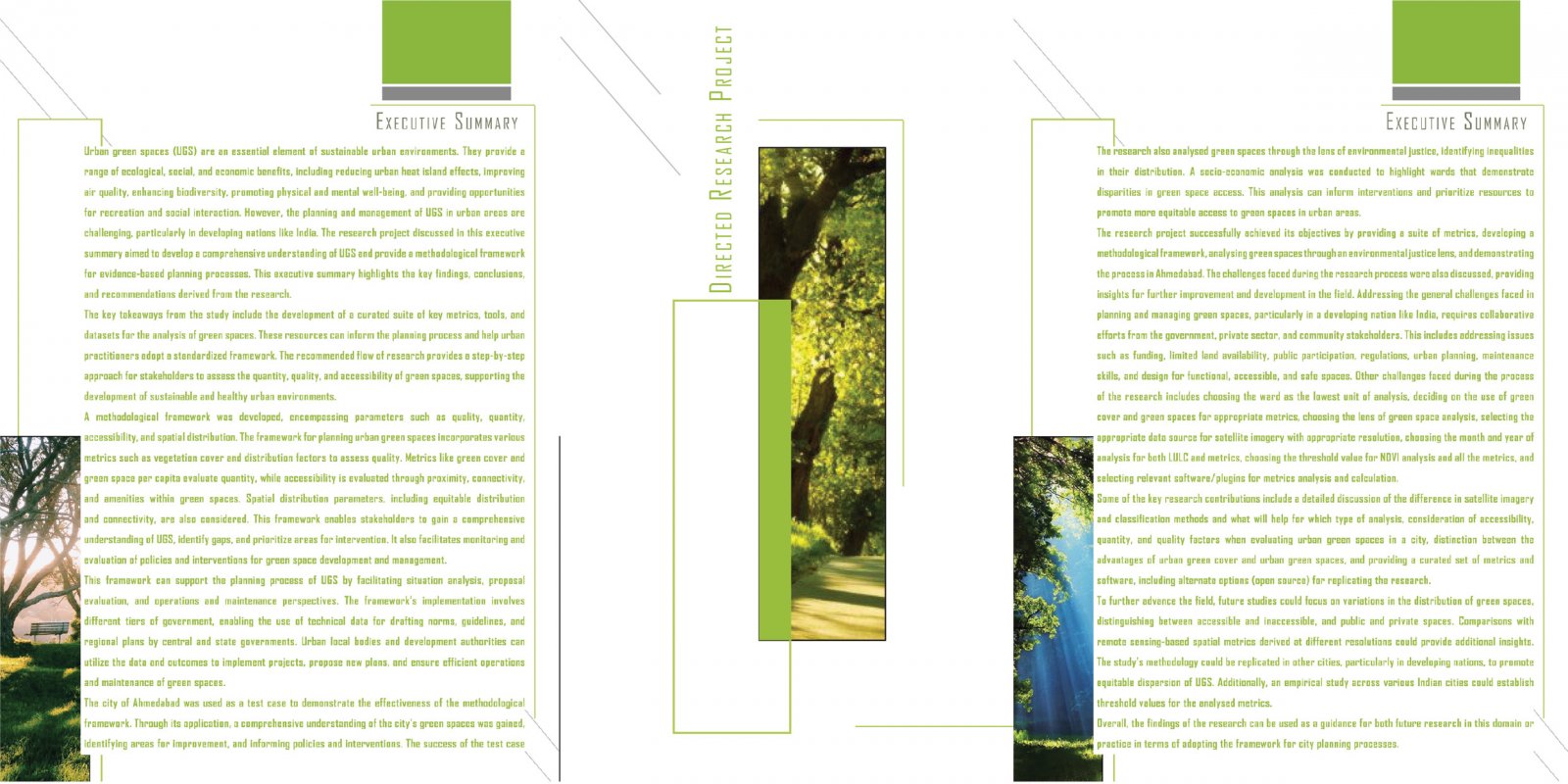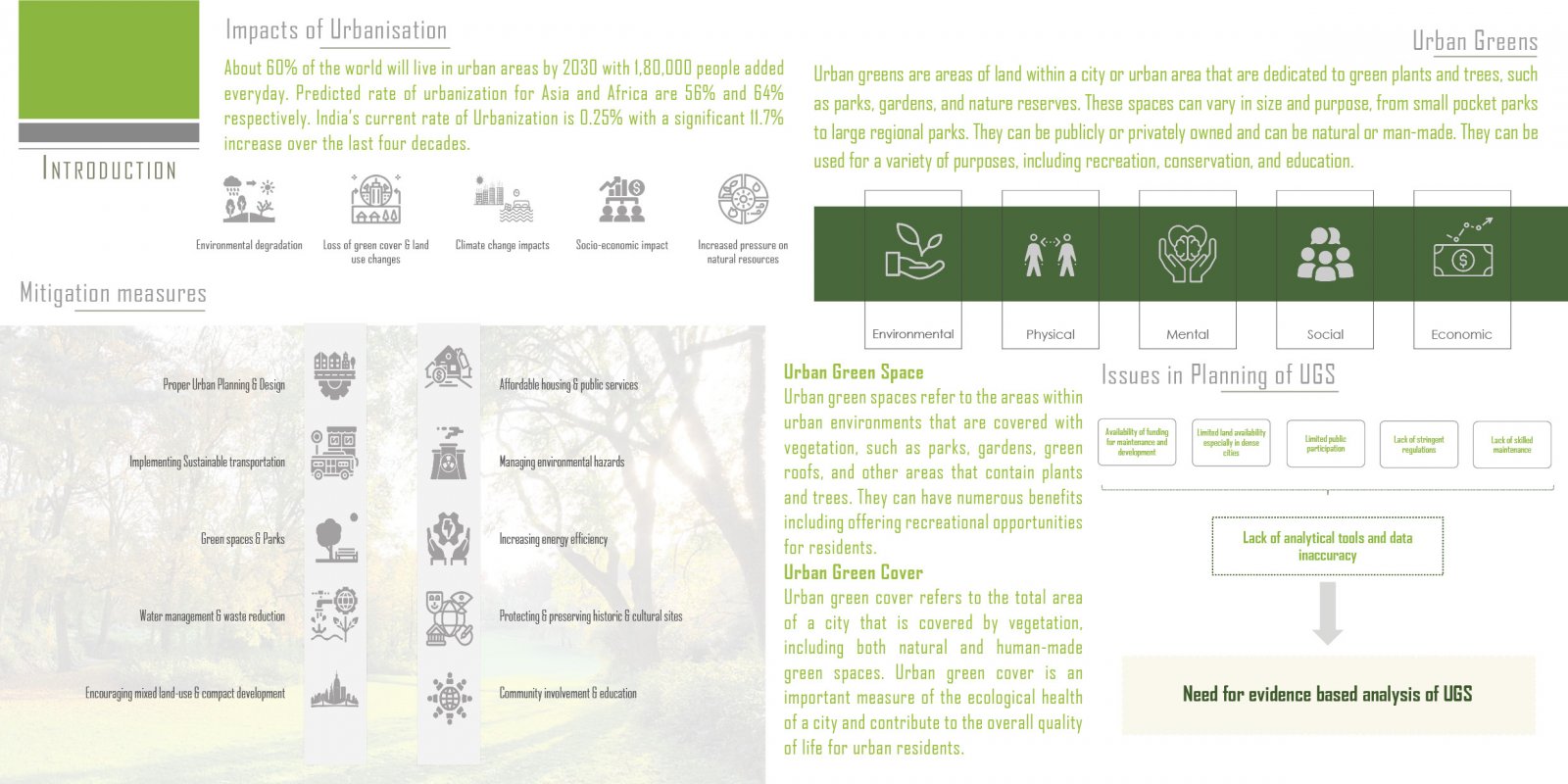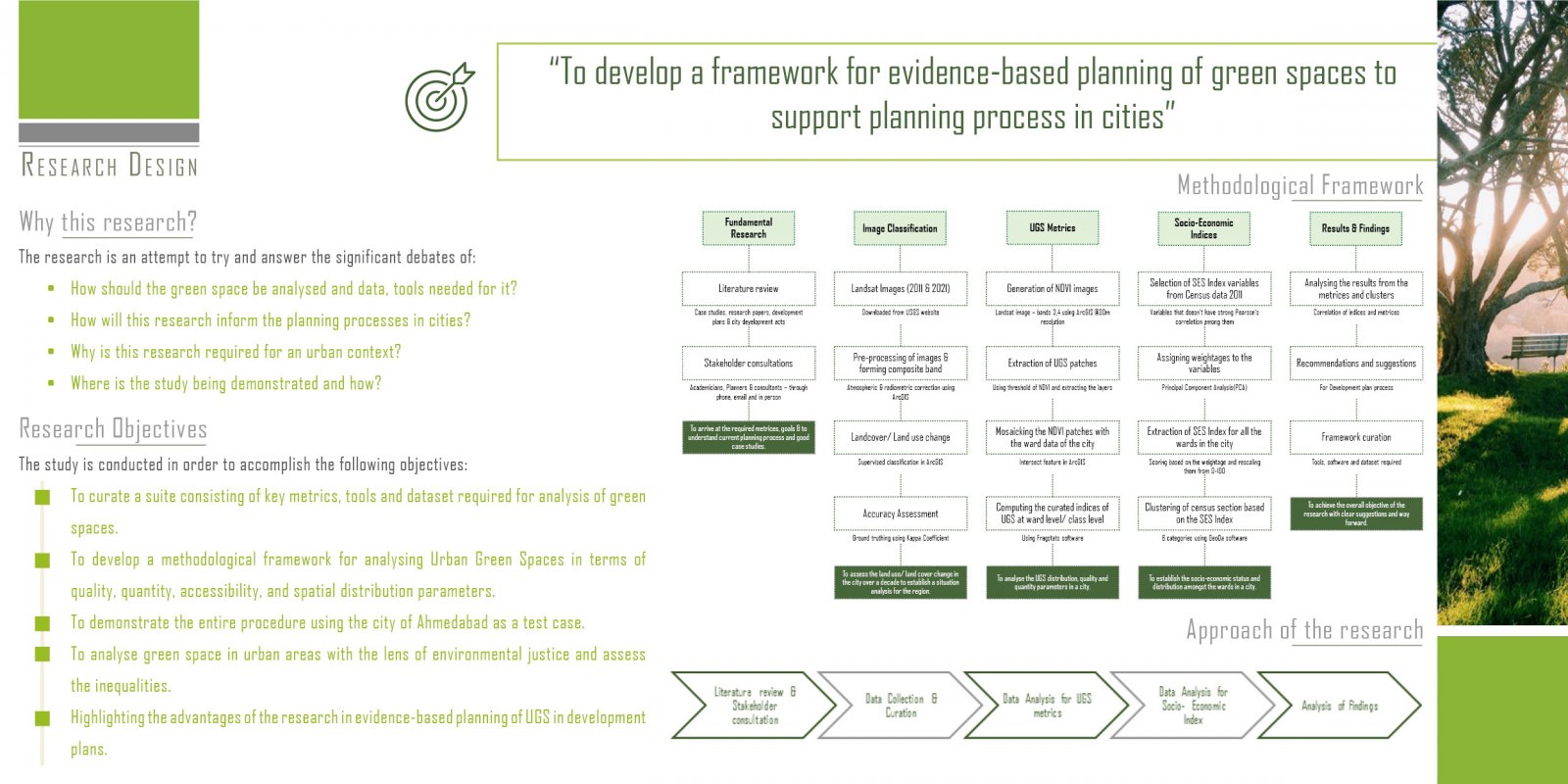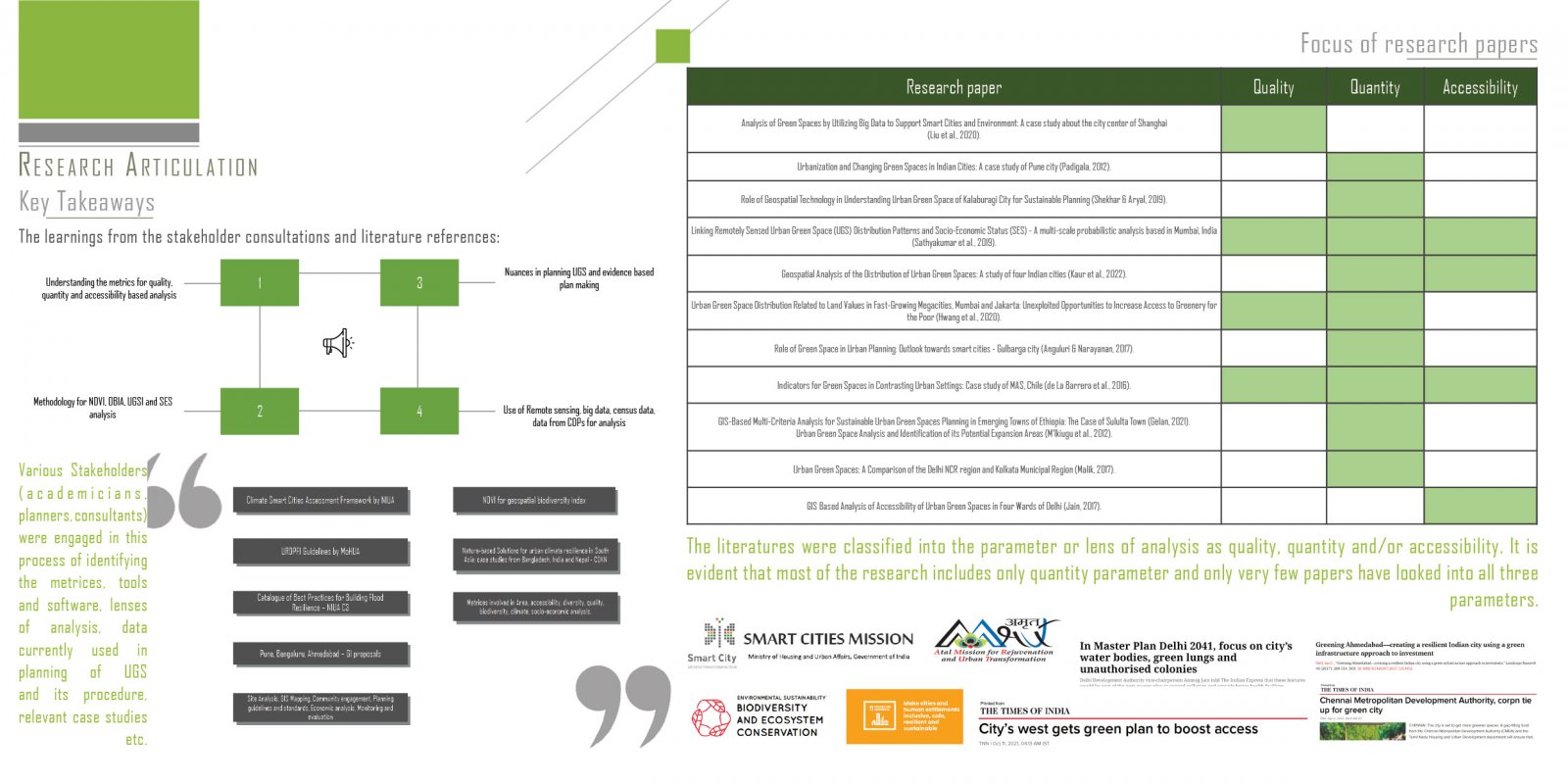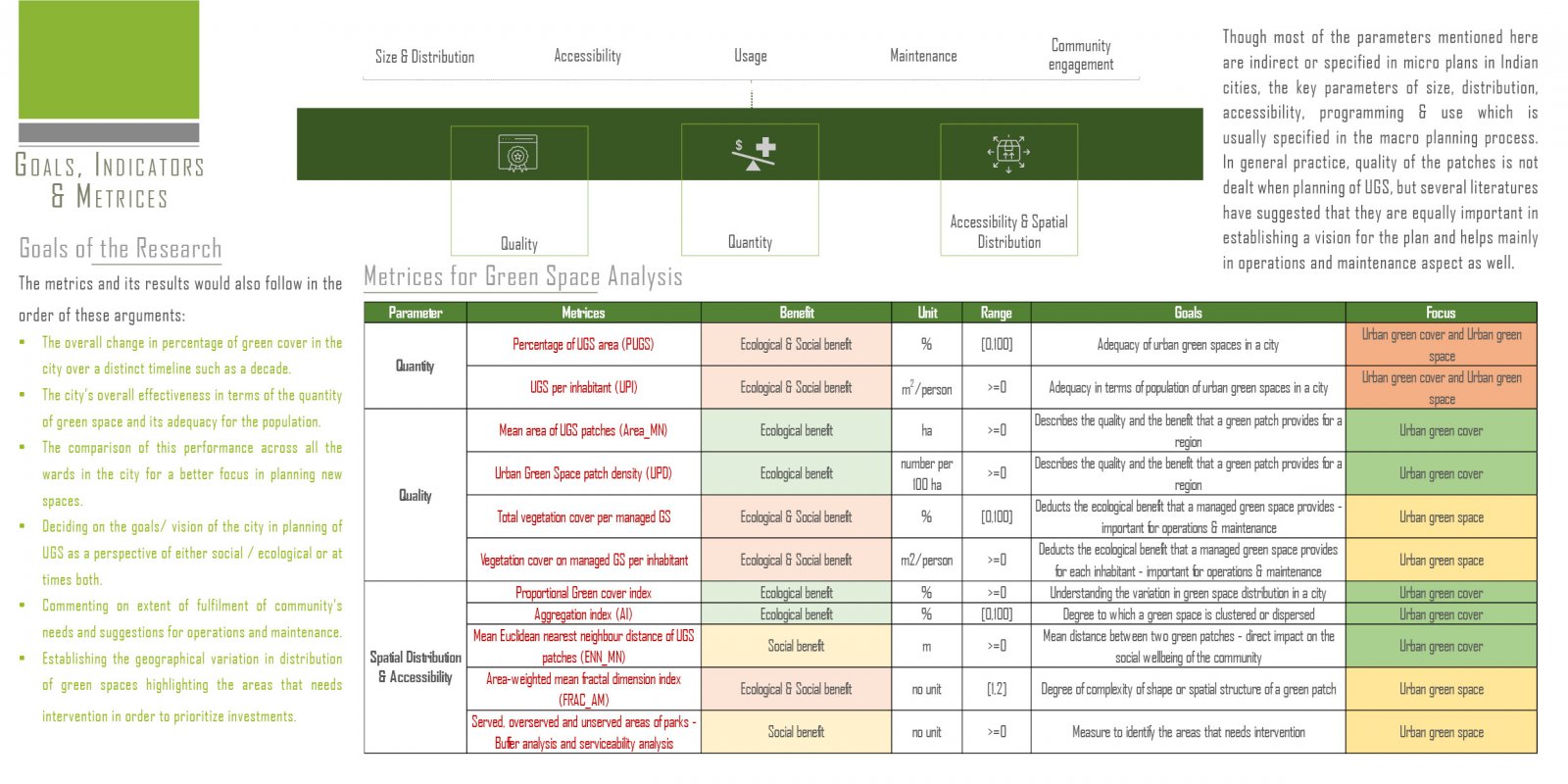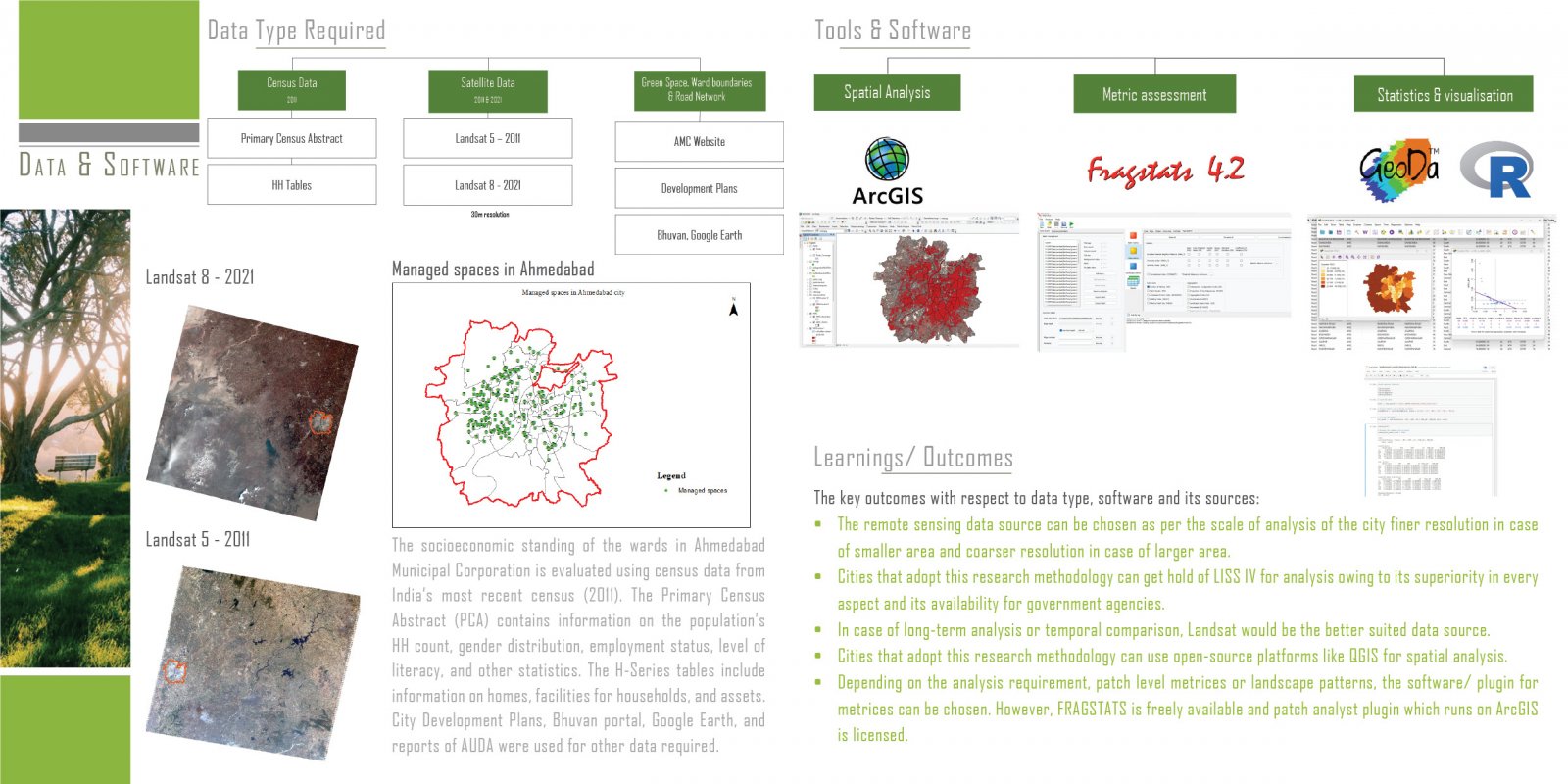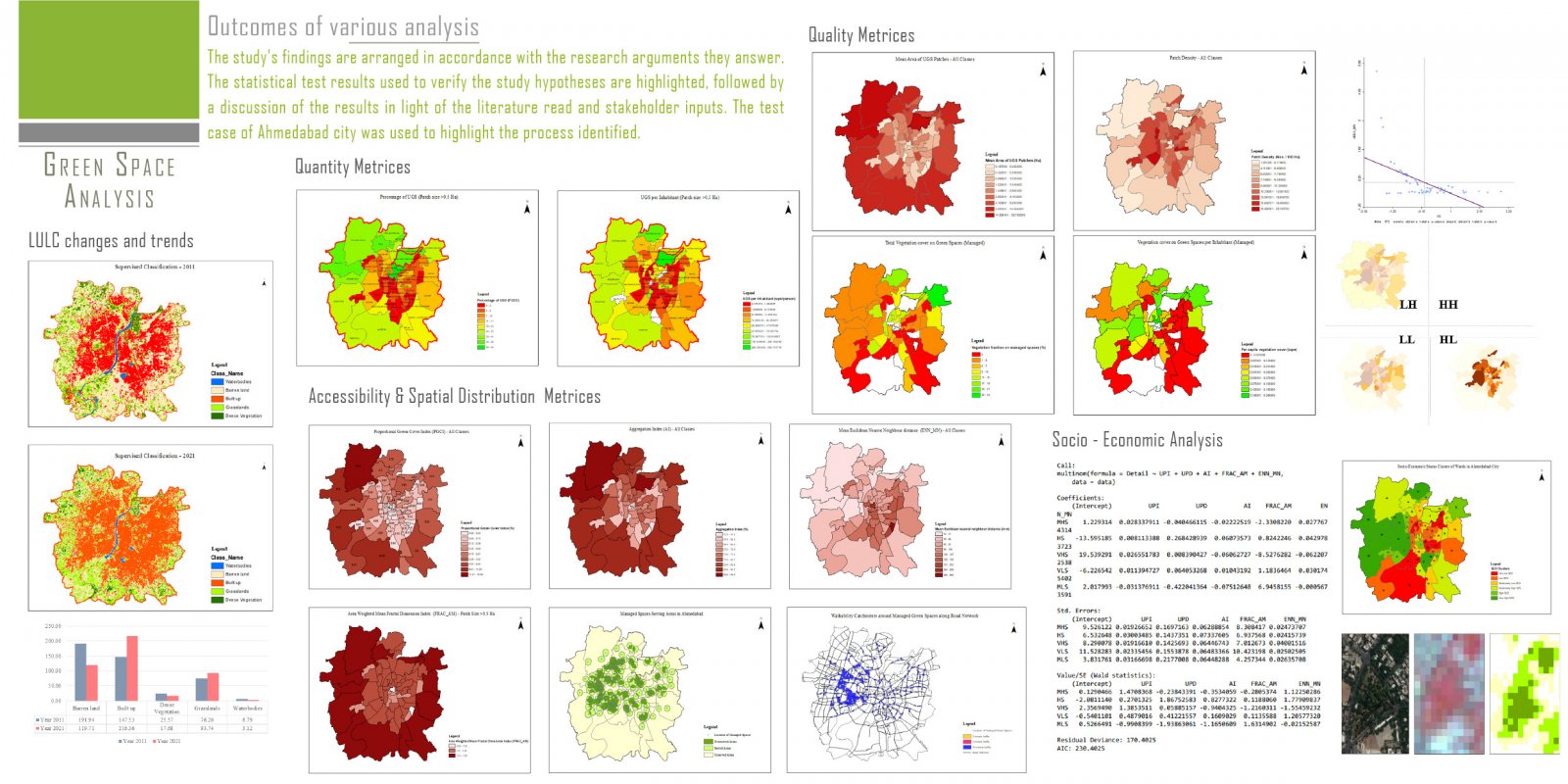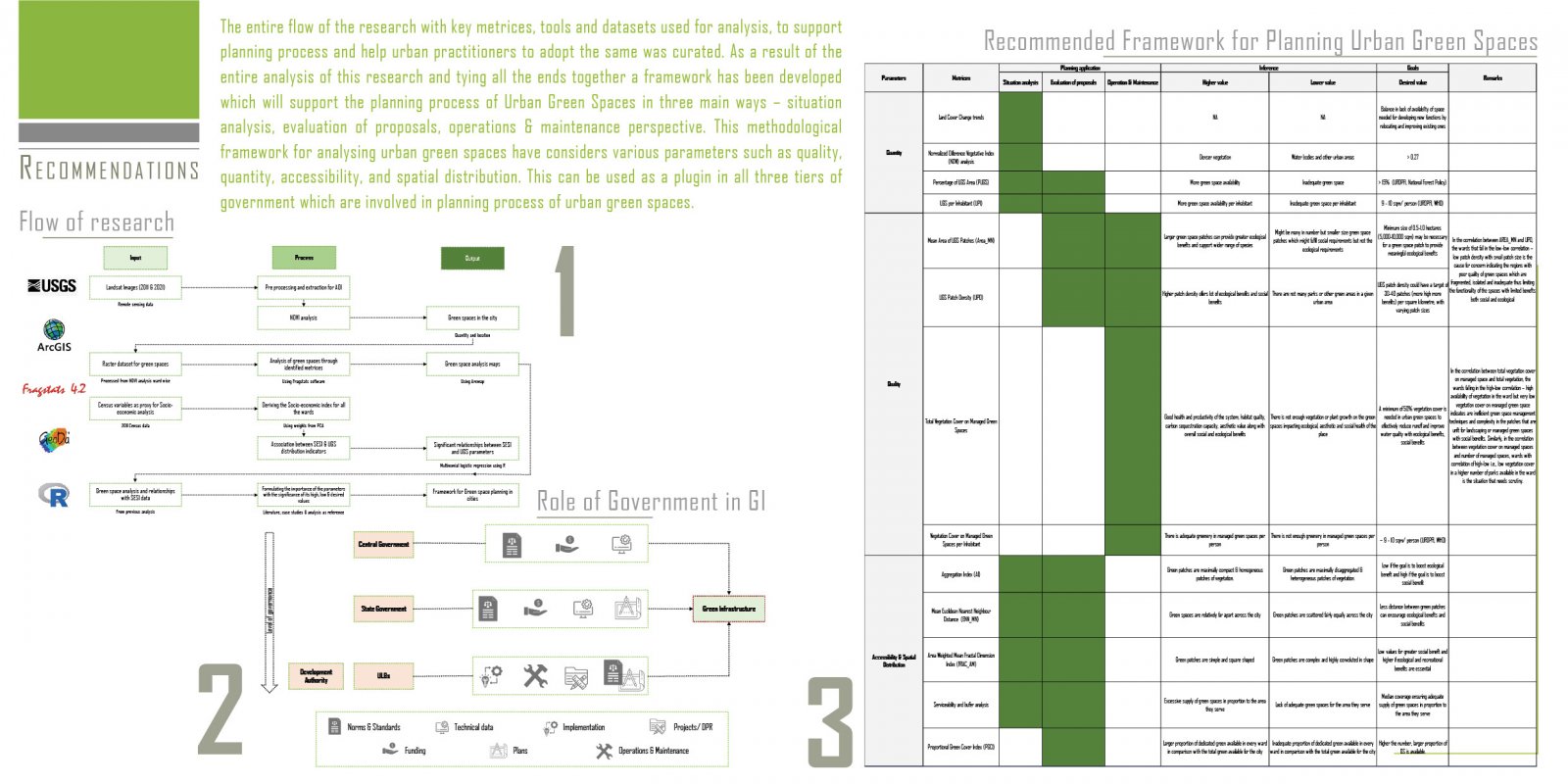Your browser is out-of-date!
For a richer surfing experience on our website, please update your browser. Update my browser now!
For a richer surfing experience on our website, please update your browser. Update my browser now!
Rapid population growth and urbanization have put immense pressure on urban green spaces, which have numerous ecological, social, and economic benefits for cities. However, the lack of standardized analytical tools and methodologies has hindered effective planning for these areas. This study proposes an empirically driven methodology that uses Geographic Information System (GIS) techniques to analyze the quantity, quality, accessibility, and spatial distribution of urban green spaces and green cover. The framework can be used as a planning tool to prioritize investments, evaluate proposals, and support operation and maintenance to improve urban green spaces. Such efforts can promote social equity, enhance climate resilience, and improve residents' quality of life.
View Additional Work